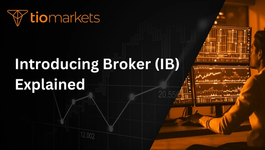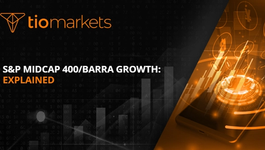FTSE futures: Explained
BY TIOmarkets
|July 12, 2024In the world of trading, futures contracts are a common financial instrument used by investors to speculate on the price movement of an underlying asset. One such futures contract that has gained considerable popularity among traders is the FTSE futures contract. The FTSE, or Financial Times Stock Exchange, is a share index of the 100 companies listed on the London Stock Exchange with the highest market capitalization. Trading FTSE futures allows investors to speculate on the future value of this index.
FTSE futures contracts are standardized agreements to buy or sell the FTSE 100 Index at a predetermined price at a specified time in the future. These contracts are traded on futures exchanges and are popular among investors due to their potential for high returns. However, like all futures contracts, they also carry a high level of risk and require a deep understanding of the market to trade successfully.
Understanding FTSE Futures
FTSE futures contracts are derivative instruments, meaning their value is derived from the price of another asset - in this case, the FTSE 100 Index. When you buy a FTSE futures contract, you are essentially betting that the price of the FTSE 100 Index will rise in the future. Conversely, if you sell a FTSE futures contract, you are predicting that the price of the index will fall.
Each FTSE futures contract has a specific expiration date, which is the date when the contract must be settled by either buying or selling the underlying asset. The price at which the contract is settled is known as the settlement price. This price is determined by the average price of the FTSE 100 Index during the last hour of trading on the expiration date.
Contract Specifications
Like all futures contracts, FTSE futures have specific contract specifications that traders must understand. These specifications include the contract size, tick size, and contract months. The contract size for FTSE futures is £10 per index point. This means that for every point move in the FTSE 100 Index, the value of the futures contract changes by £10.
The tick size, or the minimum price movement of the contract, is 0.5 index points, which is equivalent to £5. Contract months are the months in which the futures contract can be traded. For FTSE futures, these are March, June, September, and December.
Trading Hours
FTSE futures contracts are traded on the ICE Futures Europe exchange. The trading hours for these contracts are from 8:00 a.m. to 9:15 a.m. London time for the pre-open period, and from 9:15 a.m. to 6:30 p.m. for the main trading session. There is also an evening session from 6:30 p.m. to 8:15 p.m.
It's important to note that the trading hours can be subject to changes due to daylight saving time adjustments and other factors. Therefore, traders should always check the latest trading hours from the exchange's website.
Benefits of Trading FTSE Futures
Trading FTSE futures offers several benefits to traders. One of the main advantages is the ability to speculate on the price movement of the FTSE 100 Index without having to buy or sell the individual stocks that make up the index. This can be a more cost-effective way to gain exposure to the UK's largest companies.
Another benefit is the high liquidity of FTSE futures contracts. High liquidity means that there are usually plenty of buyers and sellers in the market, which makes it easier to enter and exit trades. This can be particularly beneficial for day traders and short-term traders who need to make quick trades.
Leverage
One of the key benefits of trading futures contracts, including FTSE futures, is the use of leverage. Leverage allows traders to control a large amount of the underlying asset with a relatively small amount of capital. This can significantly increase the potential for profits, but it also increases the risk of losses.
For example, if a trader has £1,000 in their trading account, they could potentially control a FTSE futures contract worth £10,000 using 10:1 leverage. This means that a 1% move in the price of the FTSE 100 Index could result in a 10% return on the trader's initial investment. However, if the price moves against the trader, they could also lose a significant portion of their investment.
Hedging
FTSE futures contracts can also be used for hedging purposes. Hedging is a risk management strategy used by traders and investors to protect their portfolio from adverse price movements. By taking a position in the futures market that is opposite to their position in the spot market, traders can offset potential losses if the price of the underlying asset moves against them.
For example, if an investor owns a portfolio of UK stocks and is concerned about a potential downturn in the market, they could sell FTSE futures contracts to hedge their risk. If the FTSE 100 Index falls, the losses in the investor's portfolio would be offset by the profits from the futures contracts.
Risks of Trading FTSE Futures
While trading FTSE futures can offer significant potential for profits, it also comes with a high level of risk. One of the main risks is the use of leverage, which can amplify losses as well as gains. If the price of the FTSE 100 Index moves against the trader's position, they could lose more than their initial investment.
Another risk is the complexity of futures contracts. Understanding the contract specifications, such as the contract size and tick size, can be challenging for novice traders. Additionally, futures contracts have an expiration date, which means that traders must close their positions before this date or they will be obligated to settle the contract.
Market Risk
Market risk refers to the risk that the price of the FTSE 100 Index will move against the trader's position. This can be influenced by a variety of factors, including economic data, political events, and changes in market sentiment. Traders must stay informed about these factors and be prepared to adjust their trading strategy accordingly.
For example, if the UK economy is showing signs of weakness, this could lead to a fall in the FTSE 100 Index. Traders who have bought FTSE futures contracts would then face potential losses. Conversely, if the economy is strong, the index could rise, leading to potential profits for traders who have bought contracts.
Counterparty Risk
Counterparty risk is the risk that the other party in the futures contract will fail to fulfill their obligations. This is a relatively low risk in the case of FTSE futures, as these contracts are traded on a regulated exchange and are backed by the exchange's clearing house. However, it's still a risk that traders need to be aware of.
In the unlikely event that a counterparty fails to fulfill their obligations, the clearing house would step in to ensure that the contract is settled. However, this could result in delays and additional costs for the trader.
Strategies for Trading FTSE Futures
There are several strategies that traders can use when trading FTSE futures. These strategies can be broadly categorized into two types: directional strategies and non-directional strategies. Directional strategies involve betting on the direction of the price movement of the FTSE 100 Index, while non-directional strategies involve making a bet on the volatility of the index.
Some common directional strategies include trend following, where traders try to profit from the continuation of an existing trend, and counter-trend trading, where traders try to profit from a reversal of an existing trend. Non-directional strategies include options strategies, such as straddles and strangles, which involve buying or selling options contracts in addition to the futures contract.
Technical Analysis
Technical analysis is a popular method used by traders to predict the future price movement of the FTSE 100 Index. This involves studying price charts and using technical indicators, such as moving averages and relative strength index (RSI), to identify patterns that may indicate future price movements.
For example, if the price of the FTSE 100 Index is trending upwards and the RSI is above 70, this could indicate that the index is overbought and may be due for a correction. Traders could then sell FTSE futures contracts in anticipation of a price drop.
Fundamental Analysis
Fundamental analysis involves studying economic data and other fundamental factors to predict the future price movement of the FTSE 100 Index. This could include data on the UK economy, such as GDP growth, inflation rates, and unemployment rates, as well as corporate earnings reports and other news events.
For example, if the UK economy is showing signs of strength and corporate earnings are beating expectations, this could lead to a rise in the FTSE 100 Index. Traders could then buy FTSE futures contracts in anticipation of a price increase.
Conclusion
Trading FTSE futures can be a profitable venture for experienced traders who understand the risks involved and have a solid trading strategy in place. However, it's not suitable for everyone, and novice traders should take the time to educate themselves and gain experience before diving in.
As with all forms of trading, it's important to manage your risk and only invest money that you can afford to lose. If you're interested in trading FTSE futures, consider starting with a demo account to practice your strategies without risking real money.
Start Trading FTSE Futures with TIOmarkets
Ready to put your knowledge of FTSE futures into action? Join TIOmarkets, a top rated forex broker offering a robust online trading platform. With over 170,000 accounts opened across more than 170 countries, we provide traders with the opportunity to trade over 300 instruments across 5 markets, including Forex, indices, stocks, commodities, and futures, all with low fees. Enhance your trading skills with our comprehensive educational resources and step-by-step guides. Create a Trading Account today and start your journey towards successful trading!

Risk disclaimer: CFDs are complex instruments and come with a high risk of losing money rapidly due to leverage. You should consider whether you understand how CFDs work and whether you can afford to take the high risk of losing your money. Never deposit more than you are prepared to lose. Professional client’s losses can exceed their deposit. Please see our risk warning policy and seek independent professional advice if you do not fully understand. This information is not directed or intended for distribution to or use by residents of certain countries/jurisdictions including, but not limited to, USA & OFAC. The Company holds the right to alter the aforementioned list of countries at its own discretion.
Join us on social media

Behind every blog post lies the combined experience of the people working at TIOmarkets. We are a team of dedicated industry professionals and financial markets enthusiasts committed to providing you with trading education and financial markets commentary. Our goal is to help empower you with the knowledge you need to trade in the markets effectively.





